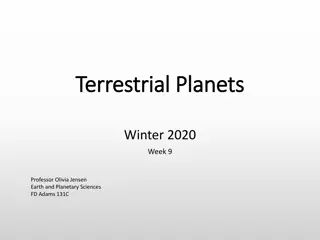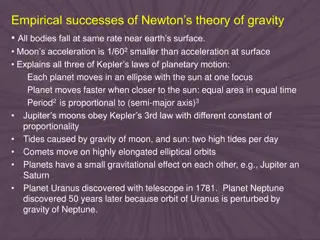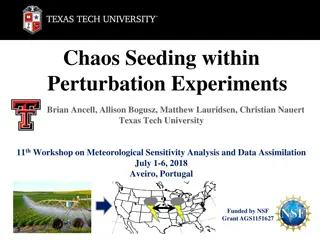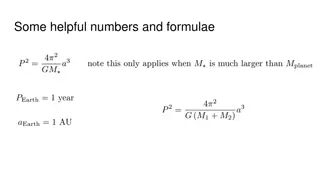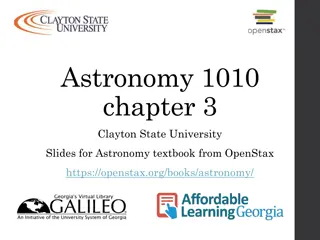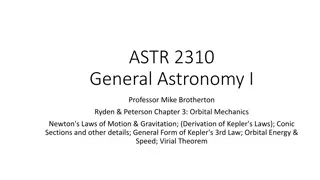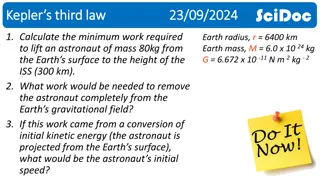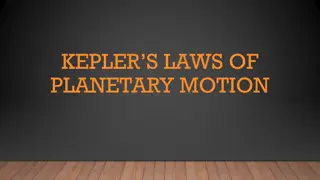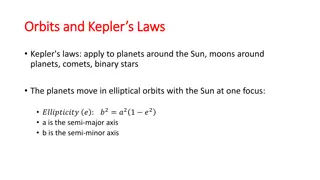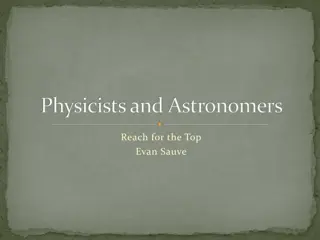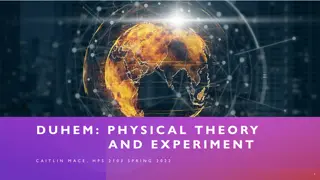Exploring Chaos Theory: A Journey from Kepler to Fractals
Delve into the fascinating world of chaos theory, tracing its evolution from the seminal works of Kepler and Newton to the complexities of Poincare's findings and modern chaos concepts. Discover the dynamics of chaotic systems like the simple pendulum and understand the implications of sensitive dependence on initial conditions. Explore how chaos theory has revolutionized our understanding of nonlinear systems and their behavior.
Download Presentation

Please find below an Image/Link to download the presentation.
The content on the website is provided AS IS for your information and personal use only. It may not be sold, licensed, or shared on other websites without obtaining consent from the author. Download presentation by click this link. If you encounter any issues during the download, it is possible that the publisher has removed the file from their server.
E N D
Presentation Transcript
Introduction to Chaos Clint Sprott Department of Physics University of Wisconsin - Madison Presented to Physics 311 at University of Wisconsin in Madison, WI on October 31, 2014
Abbreviated History n Kepler (1605) n Newton (1687) n Poincare (1890) n Lorenz (1963)
Kepler (1605) n Tycho Brahe n 3 laws of planetary motion n Elliptical orbits
Newton (1687) n Invented calculus n Derived 3 laws of motion F = ma n Proposed law of gravity F = Gm1m2/r2 n Explained Kepler s laws n Got headaches (3 body problem)
Poincare (1890) n 200 years later! n King Oscar (Sweden, 1887) n Prize won 200 pages n No analytic solution exists! n Sensitive dependence on initial conditions (Lyapunov exponent) n Chaos! (Li & Yorke, 1975)
Chaos n Sensitive dependence on initial conditions (positive Lyapunov exp) n Aperiodic (never repeats) n Topologically mixing n Dense periodic orbits
Simple Pendulum F = ma -mg sin x = md2x/dt2 dx/dt = v dv/dt = -g sin x dv/dt = -x (for g = 1, x << 1) Dynamical system Flow in 2-D phase space
Features of Pendulum Flow n Stable (O) & unstable (X) equilibria n Linear and nonlinear regions n Conservative / time-reversible n Trajectories cannot intersect
Pendulum with Friction dx/dt = v dv/dt = -sin x bv
Features of Pendulum Flow n Dissipative (cf: conservative) n Attractors (cf: repellors) n Poincare-Bendixson theorem n No chaos in 2-D autonomous system
Damped Driven Pendulum dx/dt = v dv/dt = -sin x bv + sin t 2-D nonautonomous dx/dt = v dv/dt = -sin x bv + sin z dz/dt = 3-D autonomous
New Features in 3-D Flows n More complicated trajectories n Limit cycles (2-D attractors) n Strange attractors (fractals) n Chaos!
Equations for Chaotic Circuit dx/dt = y dy/dt = z dz/dt = az by + c(sgn x x) Jerk system Period doubling route to chaos
Bifurcation Diagram for Chaotic Circuit
Invitation I sometimes work on publishable research with bright undergraduates who are crack computer programmers with an interest in chaos. If interested, contact me.
References n http://sprott.physics.wisc.edu/ lectures/phys311.pptx (this talk) n http://sprott.physics.wisc.edu/chaost sa/ (my chaos textbook) n sprott@physics.wisc.edu (contact me)








